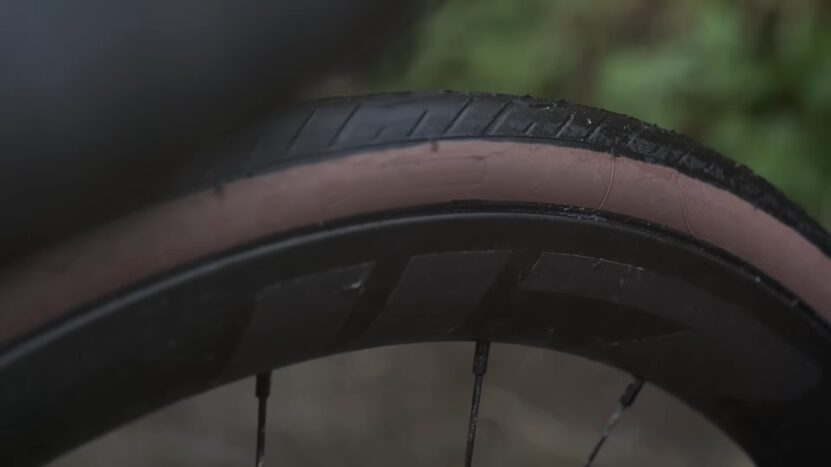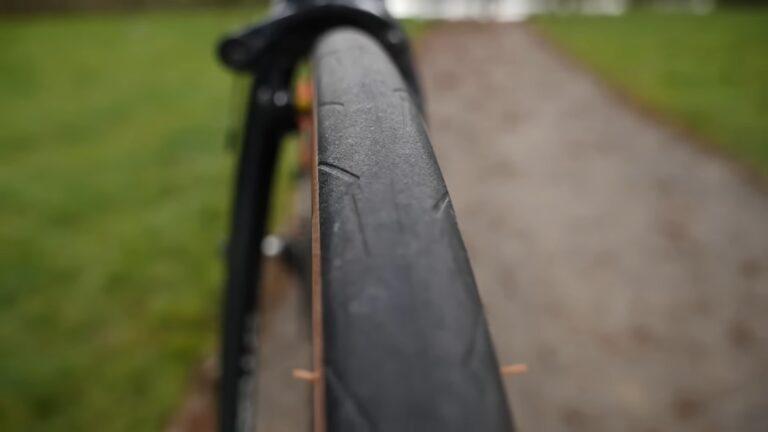Cyclists! Maintaining the right tire pressure is of the highest importance for our bikes. Not only does it ensure a smooth ride, but it also keeps us safe on the road.
But what if you find yourself without a tire gauge? Fear not! I’m here to share some handy tricks to help you check your bike tire pressure, even if you don’t have a gauge on hand.
Fun Fact: Did you know that the right tire pressure can increase the lifespan of your tires by up to 40%?
The Importance of Proper Bike Tire Pressure
Having the correct tire pressure is like having the right foundation for a building. It supports the weight, ensures stability, and maximizes performance. When your tires are properly inflated, you’ll experience a smoother ride, better traction, and reduced risk of punctures.
Imagine you’re out on a trail, miles away from the nearest bike shop, and you feel that your tires might be a bit off. Knowing how to check the pressure without a gauge can be a lifesaver. It’s a skill every cyclist should have in their arsenal.
Visual Inspection

Before we get into the nitty-gritty, let’s start with the basics. One of the easiest ways to check your tire pressure is by giving it a good look and feel.
Pro Tip: Always inspect your tires before a long ride. It takes just a few minutes and can save you from potential hazards.
A tire that’s correctly inflated will appear full and round. When you press it with your thumb, it should give a little but bounce back quickly. If it feels too hard or too soft, it might be time to adjust the pressure.
If your tire looks a bit flat or has a noticeable bulge at the bottom where it meets the road, it’s likely underinflated. Another sign? If you can easily press into the tire and it doesn’t bounce back, you’re running low on air.
On the flip side, a tire that’s too full will feel rock-hard to the touch. It might also appear slightly bulging all over, rather than just at the bottom.
Interesting Fact: Overinflated tires can reduce traction and make your ride feel bumpy. They’re also more prone to punctures!
Manual Pressure Testing
Alright, let’s get hands-on! Your fingers can be surprisingly effective tools for gauging tire pressure.
Press your thumb firmly into the tire. A properly inflated tire will resist your pressure, while an underinflated one will let your thumb sink in a bit. An overinflated tire? Your thumb will barely make a dent.
Think of a ripe avocado. When you press it, it should give a little but still feel firm. That’s how your tire should feel. If it’s as soft as an overripe banana or as hard as an apple, you’ll need to adjust the pressure.
Grab the tire with both hands and give it a squeeze. It should compress slightly but spring back into shape quickly. If it feels squishy or doesn’t bounce back, you know what to do.
Pro Tip: Always use the same hand and the same amount of force when doing the squeeze test. This way, you’ll get a consistent feel for the pressure over time.
Measuring Tire Pressure by Ear

Listening closely? Your ears can be a fantastic tool in assessing tire pressure. It’s all about tuning in to the subtle sounds your tires make.
Fun Fact: Tires can “sing”! The pitch and volume of the sound they produce can change based on their inflation level.
When a tire is underinflated, it might produce a softer, lower-pitched sound as it rolls. If you’re riding and hear a slight thudding or a muffled roll, it’s a sign that your tire might need some air.
Overinflated tires, on the other hand, can sound tinny or high-pitched. They might even produce a slight ringing or echoing sound, especially when riding on smoother surfaces.
Tire treads play a significant role in the sounds your tires make. Deeper treads can muffle sounds, while worn-out treads can amplify them. Always factor in the condition of your treads when assessing tire pressure by ear.
Using Common Objects
You’d be surprised at the everyday items that can help you gauge tire pressure. Let’s explore some unconventional yet effective methods.
Slide a piece of paper between your tire and the ground. If it moves freely with little resistance, your tire might be underinflated. If it’s tough to move or gets pinched, your tire is likely in good shape or slightly over-inflated.
Press a pen cap into the tire. The depth to which it sinks can give you a rough idea of the tire’s inflation. A shallow indent indicates proper inflation, while a deep one suggests underinflation.
Pro Tip: These methods are more about getting a general sense rather than precise measurements. Always cross-check with other methods if in doubt.
Riding Experience

Your riding experience can tell you a lot about your tire pressure. It’s all about feeling the subtle changes as you pedal.
A bike with properly inflated tires will glide smoothly. If you start feeling more resistance or if the ride feels “draggy,” it might be time to check the pressure.
Handling can be significantly affected by tire pressure. Overinflated tires can make the bike feel jittery or unstable, especially on turns. Underinflated tires, on the other hand, can make the bike feel sluggish or hard to steer.
Make it a habit to take short test rides after adjusting your tire pressure. It helps you get a feel for the bike and ensures that you’ve got the pressure just right.
Interesting Fact: Cyclists in the early 1900s often rode short distances to “break in” newly inflated tires and ensure they felt right.
Remember, your safety and comfort on the bike largely depend on tire pressure. So, always be attentive and proactive in ensuring it’s just right. Happy cycling!
FAQ
Why can’t I just use a standard car tire gauge for my bike?
While both car and bike tires require pressure checks, their gauges aren’t always interchangeable. Bike tires often have higher pressures, and their valves can be different (Presta vs. Schrader). Using a car tire gauge might not give accurate readings for a bike tire.
How often should I be checking my bike tire pressure?
It’s good practice to check your bike tire pressure before every ride, especially if you’re going on longer trips. Tires can lose pressure over time, and factors like temperature changes can also affect inflation levels.
Can altitude or weather conditions affect my tire pressure?
Absolutely! Cold weather can cause tires to lose pressure, while hot weather can increase it. Similarly, at higher altitudes, the external atmospheric pressure is lower, which can make the tire pressure seem higher than it actually is.
Are there any digital tools or apps to help with tire pressure checks?
Yes, there are digital tire pressure gauges specifically designed for bikes. Some advanced gauges even come with Bluetooth connectivity, allowing you to monitor pressure via smartphone apps. These tools offer precise readings and can be a great addition to your cycling toolkit.
Conclusion
Cycling is more than just pedaling forward; it’s about understanding and connecting with every part of your bike, especially the tires. They’re your direct link to the road or trail, and ensuring they’re at the right pressure is paramount for both performance and safety. While having a tire gauge is undeniably useful, life has its unpredictable moments.
Whether you’re out on a remote trail or just misplaced your tools, knowing how to manually check your tire pressure is invaluable. The methods we’ve explored are not just about getting by in a pinch; they’re about fostering a deeper connection with your bike and understanding its needs.
So, the next time you head out, take a moment to look, feel, and listen to your tires. It’s not just about the destination but ensuring a safe and enjoyable journey. Keep riding, stay safe, and always be in tune with your two-wheeled companion!

